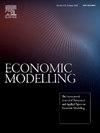灾害风险如何影响财政可持续性和不平等?
IF 4.7
2区 经济学
Q1 ECONOMICS
引用次数: 0
摘要
我们调查了灾害风险的增加是否会增加政府债务,破坏财政可持续性,并不成比例地影响低收入家庭。通过对184个经济体1995年至2021年的地方专项预测,我们发现气候脆弱性冲击加剧了债务动态,反映在债务与gdp之比上升和财政平衡恶化上。这些冲击还加剧了收入不平等,低收入群体的收入份额相对于高收入群体有所下降。一项依赖于国家的分析显示,这些影响在气候风险高的国家最为严重。在这一实证分析的激励下,我们建立了一个新的凯恩斯动态随机一般均衡模型,该模型包含两种家庭类型和一个财政当局采取有针对性的政策。灾难冲击引发经济衰退,加剧消费不平等。与李嘉图家庭相比,仅能糊口的家庭的消费下降了三倍。随着各国政府采取措施缓解经济冲击,主权债务急剧增加。然而,与累进所得税相比,定向转移支付以更低的财政成本有效地减少了不平等。我们的研究结果表明,面对日益增长的灾害风险,设计具有气候适应性的预算和公平的救济措施对于保持财政偿付能力和社会凝聚力至关重要。本文章由计算机程序翻译,如有差异,请以英文原文为准。
How does disaster risk impact fiscal sustainability and inequality?
We investigate whether heightened disaster risk increases government debt, undermines fiscal sustainability, and disproportionately affects low-income households. Using panel local projections from 1995 to 2021 across 184 economies, we find that climate vulnerability shocks worsen debt dynamics, reflected in higher debt-to-GDP ratios and deteriorating fiscal balances. These shocks also heighten income inequality, with the income share of low-income groups declining relative to that of high-income groups. A state-dependent analysis reveals that these effects are most severe in high states of climate risks. Motivated by this empirical analysis, we develop a new Keynesian dynamic stochastic general equilibrium model featuring two household types and a fiscal authority employing targeted policies. Disaster shocks induce recessions and intensify consumption inequality. Consumption among hand-to-mouth households declines by a factor of three compared to Ricardian households. Sovereign debt increases sharply as governments implement measures to cushion the economic blow. However, targeted transfers effectively reduce inequality at a lower fiscal cost than progressive income taxes. Our findings suggest that designing climate-resilient budgets and equitable relief measures is essential to preserving both fiscal solvency and social cohesion in the face of growing disaster risk.
求助全文
通过发布文献求助,成功后即可免费获取论文全文。
去求助
来源期刊

Economic Modelling
ECONOMICS-
CiteScore
8.00
自引率
10.60%
发文量
295
期刊介绍:
Economic Modelling fills a major gap in the economics literature, providing a single source of both theoretical and applied papers on economic modelling. The journal prime objective is to provide an international review of the state-of-the-art in economic modelling. Economic Modelling publishes the complete versions of many large-scale models of industrially advanced economies which have been developed for policy analysis. Examples are the Bank of England Model and the US Federal Reserve Board Model which had hitherto been unpublished. As individual models are revised and updated, the journal publishes subsequent papers dealing with these revisions, so keeping its readers as up to date as possible.
 求助内容:
求助内容: 应助结果提醒方式:
应助结果提醒方式:


